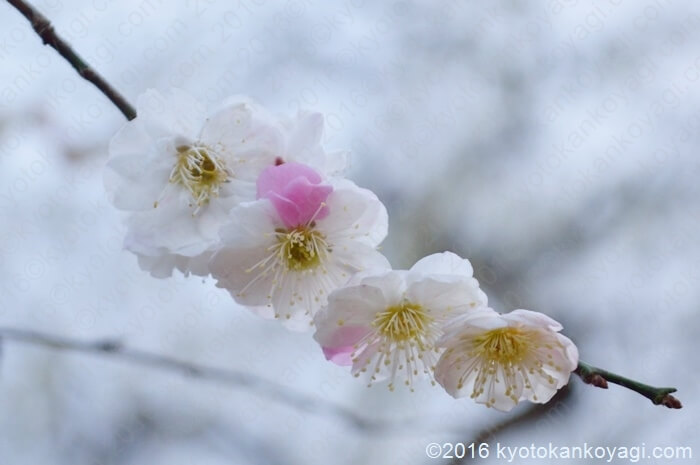Overview
Prior to Emperor Akihito’s abdication, Chief Cabinet Secretary Yoshihide Suga annonced that new Imperial period/era will be Reiwa (令和) at the press conference. In this article, what does the the word mean to us and a history of Japanese regnal period. 合掌
What does Reiwa mean?
Manyoshu 万葉集
“The word Reiwa was chosen the words in The Manyoshu (『万葉集』). 令 means felicity and 和 means harmony or peace individually,” quoted him as saying.
The Manyoshu is the oldest collection of poetry in existence, compiled in Nara period (710 – 794). It is written in Manyogana (万葉仮名) which was invented on words imported from Han dynasty in ancient China to write down ancient Japanese language. The words of Han are known as Kanji. Kanji means “The letter of Han (dynasty).” Ancient Japanese people put a Kanji on one syllable of their language without consideration of its original meaning.
The 32 poems of plum blossoms and Introduction 梅花謌卅二首并序
What does the poem mean?
In the first place, let us make sure the meaning of the poem 令和 was quoted. These words are found in the chapter called “The 32 poems of plum blossoms and Introduction 梅花謌卅二首并序” in The Manyoshu.
The words 令 and 和 was chosen form the following sentence in Manyogana: 于時、初春令月、氣淑風和、梅披鏡前之粉、蘭薫珮後之香.
The sentence reads in literary Japanese language ” Tokini, syosyun no rei getsu nisite, kiyoku kazeyawaragi ume wa kyouzen no ko wo hiki, ran ha haigo no ko wo kaorasu.(時に、初春の令月にして、気淑く風和らぎ、梅は鏡前の粉を披き、蘭は珮後の香を薫す。)”
The following are translation:
時に、初春の令月にして Now, it is a day of good fortune to do something in spring.
気淑く風和らぎ The air is tender and beautiful, hiding our felicity behind it
梅は鏡前の粉を披き Japanese plum blossoms bloom as if they were ladies on exquisite makeup.
蘭は珮後の香を薫す Orchids are in alluring fragrance as though they wore perfume.
Honkatori technique
The sentence in the poem “于時、初春令月、氣淑風和、梅披鏡前之粉、蘭薫珮後之香.” takes advantage of Honkatori technique. It is an allusion used in Waka. A composer put line or words which reminds the reader of those of the old and famous literature. I’ll show you a good example. Paul Bowles’ work is Let it come down. Honkatori is something like that.
The sentence reminds us of “於是仲春令月 時和気清 原隰鬱茂 百草滋栄.” It is a poem composed by Wang Xizi, a famous poet in Jin Dynasty. In ancient Japan (even today) a learned person was to familiar to ancient Chinese poem.
The meaning of the Kanji, 令 and 和
令
令 is a compound ideograph. the upper part is a crown and the lower part is a person on their knees. The Kanji originally meant “to have an oracle.” On this meaning, the word began to mean “To give order.” People in order looked beautiful, then it started to mean “good, or extraordinary.
和
和 is phono-semantic compound character. I emit its original meaning of it because there are many hypothesis on it. The Kanji means “go with,”or “calm.” In this meaning, the word began to mean “peace.”
What did Prime Minister Shinzo Abe say about Reiwa 令和?
The Prime Minister was quated as saying: “The Manyosu was the oldest Waka (Japanese poem) compilation organazed around 1,200 years ago. It consists of many Waka without consideration of the classes the composer belonged to; Emperors, court nobles, court ladies, warriors, and farmers. It is a Kokusyho (国書) which proves our profound culture and tradition.
Long history and extraordinary cultural inheritance, and four seasons with fertility. This is our country. We shall let the following generations inherit them.
Japanese plum blossoms live through severe winter and blooms in spring without failure to tell us the end of the dreadful season. Like the flower, every single Japanese is to make their life flourished. I sincerely hope it would come true in our country. So, I decided to named the new Imperial period 令和. I am extremely grateful because we take the first step toward the new era with prospect, showing gratitude for the peaceful days in which we can admire the nature and enrich our cultural inheritance.
Japan and the Imperial period/era
The beginning of Japanese regnal period
The history of the Imperial period/era (元号) dates back to 645. In the year, Taika reform (大化の改新) took place. It is a land and taxation reform to enhance the power of the imperial court for the purpose of centralization. Since then, our country uses the Imperial period/ era called Gengo (元号). The first Gengo is Taika (大化). Taika reform was named after the Gengo. In addition to it, we started to call our country Nihon/Nippon (日本) and emperor Tenno (天皇). Though Gongo and these terms were originated, Japan has the Japanese Imperial year. This year, our country marked Japanese Imperial year 2679. Since then, we have only one dynasty.
When a new emperor succeeds the Imperial throne, a new Gengo started. It lasts during his rein. In April 30th, emperor Akihito will give up his throne. Japanese Emperor is life tenure. The abdication of the throne will take place for the first time in 200 years.
What does Reiwa 令和 mean to us?
Reiwa is the 248th Gengo in Japan. Kanji used in Gengo is only 73 because ancient emperors and governments loved to use the word which meant long reins and peace.
From 1st Taika to 127th Heisei, the Kanji of them were quoted from Kanseki (漢籍) but 248th Reiwa is from The Manyoshu, a Kokuseki (和書). As I said before, it is written in Manyogana. Thanks to it, we started to explain what we think about in characters. So, it is important for us the fact that the new Gengo was quoted from The Manyoshu.
From ancient times, we have believed that our language has Kotodama (言霊). It is a sacred power our language has: Our life is affected by each word we speak. This is the reason I and our Prime Minister try to describe what the new Imperial period 令和 means.
The world shall be in peace and harmony as our Gengo implies. Good night. 合掌。
ヤギの京都観光案内/KYOTO GOAT BLOGをもっと見る
購読すると最新の投稿がメールで送信されます。



